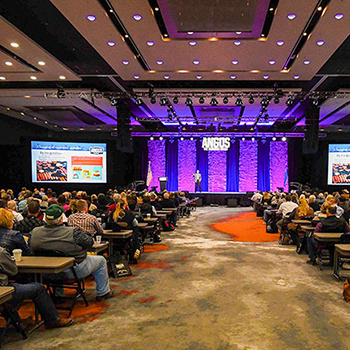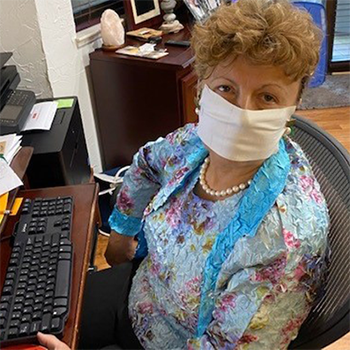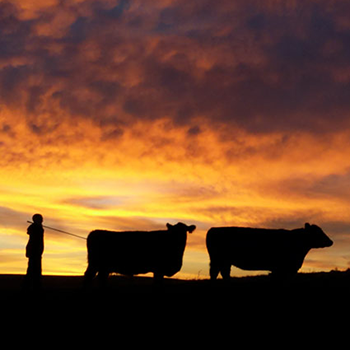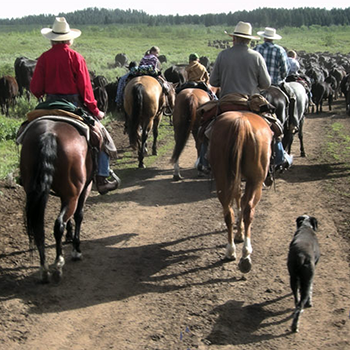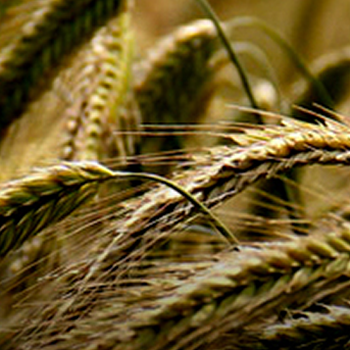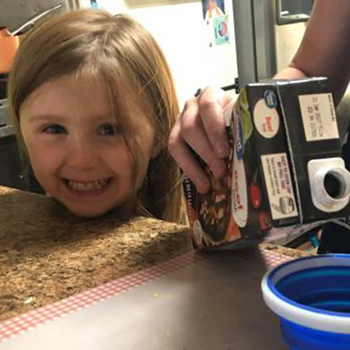Unmasking Problems
Polymer face masks developed at ag school and being tested at meat-processing plants could further efforts to protect against COVID-19.
While many people are encouraged and even mandated to wear face masks to prevent the spread of COVID-19, some complaints have become common: The mask doesn’t fit correctly. It’s uncomfortable. It’s too hot, or it’s hard to breathe through.
A material scientist at The Ohio State University (OSU) College of Food, Agricultural, and Environmental Sciences (CFAES) is working to change that.
Judit Puskas is in the final stages of developing a polymer face mask she expects will be more effective in the fight against COVID-19. Puskas, who is a distinguished professor in polymer science in the CFAES Department of Food, Agricultural and Biological Engineering, has a provisional patent application pending for the mask she is developing.
She’s working with the Mayo Clinic to create and test the mask to meet the same safety and efficacy standards of an N95 mask, but with more comfort and usability for the wearers. Puskas’ mask is made of a nonwoven fabric composed of biocompatible rubber composite formed into a fiber mat that can be used to create personal protective equipment, including face masks.
The goal, she says, is to offer alternatives to the current market of N95 masks that can be used by workers in a wider variety of conditions and situations.
“The current N95 masks protect against the virus, but most people say the masks aren’t comfortable and aren’t easily breathable,” Puskas says. “There are other polymer fiber mats used in N95-equivalent masks, but they are based on rigid plastics and don’t offer much flexibility.
“The material I’ve developed is a flexible, breathable rubber, that can be made into comfortable-fitting masks. Additionally, it’s water-repellant, doesn’t allow sneeze particles through, nor will it let moisture build up on the mask from breathing. This rubber can also be used in hot, humid conditions as well as in a freezer, can be easily sterilized in water-based solutions, and is recyclable for multiple reuse.”
It’s for those reasons that Puskas’ masks, once completed, will be tested by more than 100 workers in five meat-processing plants across Ohio to gauge the masks’ effectiveness for ag workers in hot, humid conditions.
CFAES researchers, including Lyda Garcia, an assistant professor of meat science; Mary Rodriguez, assistant professor of community leadership; and Joy Rumble, assistant professor of agricultural communication, are working with meat processors statewide to determine the barriers workers face when considering masks as personal protective equipment to reduce the potential spread of COVID-19.
The team is also researching workers’ perceptions about wearing personal protective equipment to better understand why some choose not to wear it. The team’s goal is to develop strategies to get more workers to change their perception of masks and to choose to wear them, Rodriguez says.
According to the Centers for Disease Control and Prevention (CDC), the meat and poultry processing industry, which is an essential component of the U.S. food infrastructure, employs approximately 500,000 people nationwide, many of whom work in close proximity to other workers, often in hot, humid conditions.
Ohio meat processors reached out to Garcia, who is also an Ohio State University Extension meat science specialist, and her team for help in determining solutions for personal protective equipment, including understanding what works and how to encourage workers to wear personal protective equipment such as face masks, Garcia says. OSU Extension is the outreach arm of CFAES.
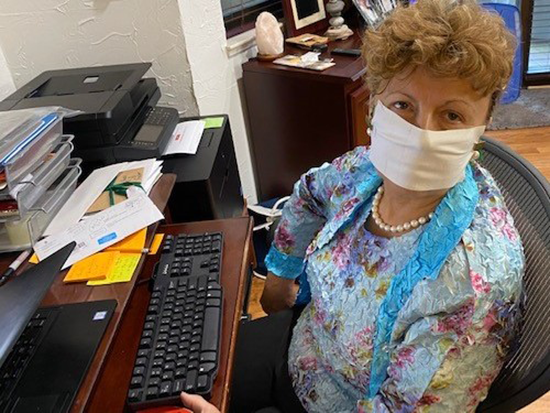 |
Judit Puskas sports a homemade illustration of her polymer face mask. She is currently in the final stages of developing a new polymer face mask that she expects will be more effective in the fight against COVID-19. [Photo courtesy Judit Puskas.] |
Garcia says the conversations with meat processors helped her team realize that understanding employee behavior and attitudes about wearing personal protective equipment such as masks would be valuable in helping Puskas modify and adjust her mask design.
“Understanding employee behavior, attitudes and leadership is critical when designing personal protective equipment,” she says. “The most common complaint among workers is that masks are uncomfortable, tend to move and slip off, and they have to keep adjusting them.
“Another drawback is that workers say it’s difficult to breathe in masks in hot, humid conditions while constantly moving, and they don’t like breathing in their own carbon dioxide that is trapped in the masks in those conditions.”
Additionally, Garcia says, with the fans and the air conditioning noise in the plants, workers say wearing masks makes it harder to communicate with each other, which could be a safety issue considering the sharp knives and tools they use.
“Also, these workers are on their feet 8 hours a day, wearing hair nets, safety glasses, with some men having long beards, then you add a mask and you can see where things can become more complicated fast on top of just wearing the mask,” she says. “At the end of the day, it’s about working with employees to encourage them to wear personal protective equipment.
“Not only will it serve to protect the food, but it will help keep the employees safe and healthy, and, in turn, will keep them working to provide a wholesome, sound, high-quality product.”
That’s one of many reasons why Puskas was compelled to develop a mask using the biocompatible rubber composite fiber mat she created as a way to add comfort, flexibility and breathability to the N95 mask market.
“It’s a very good feeling when you do research and it ends up saving people’s lives,” she says.
Editor’s note: Those wishing to support Puskas’ research can donate to the CFAES Department of Food, Agricultural and Biological Engineering Innovation Fund for Bio-Based Polymers (#316979) or contact the CFAES Office of Advancement at 614-292-0473.
